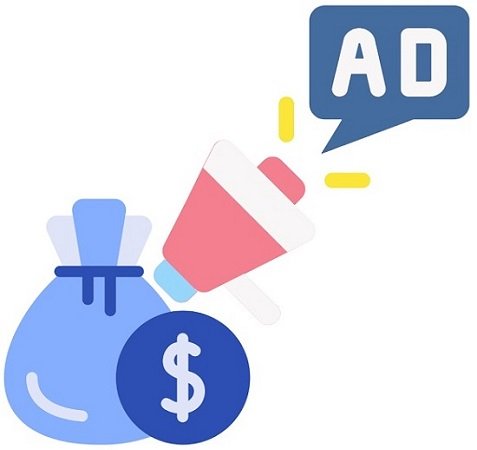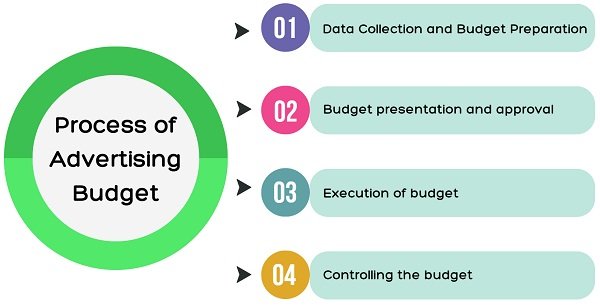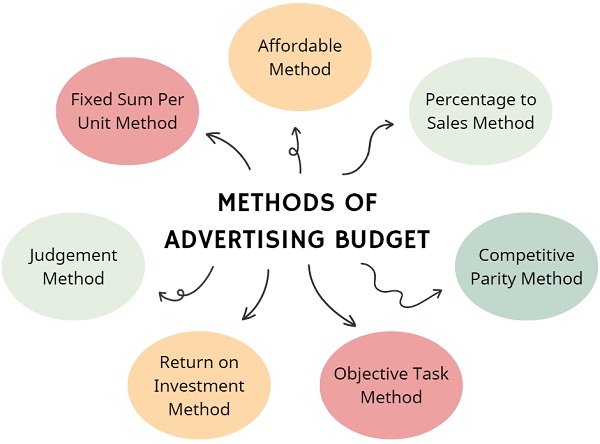Definition: Advertising Budget refers to the estimation of the total promotional expenditure on the company’s offerings. It is the amount the company incurs on advertising for a particular duration. It is a percentage share of the total marketing budget.
Advertising aims at creating demand for the product. The advertising budgeting decision is divided into two components:
- How much is to be spent on advertising within a given period?
- How should the total advertising budget be set aside for various media, offerings and target markets?
The advertising budget covers the costs concerning the following:
- Advertising programmes
- Cost of space
- Advertising material
- Media expenses
- Advertising research
- Agency commission, and so on.
To determine the budget, the management takes into account the firm’s advertising goals. Also, the size of the budget must match the advertising needs. Also, it depicts when, how much, where and for what purposes the amount will be spent.
One should note that the budget for advertising is not decided casually. Rather, the management decides it logically. In doing so, the management keeps in mind the nature of the product, market size, types of consumers and competitor’s strategy.
In addition, the advertising budget aims to build the image and reputation of the company through advertising.
Advertising Budget Strategy
The size of the advertising budget determines the composition of the advertising mix. When the budget is tight, the management is bound to use such promotional modes that the company would not use otherwise. Hence, if the funds are too small, the company uses such means for advertising that are less effective.
As you know, different firms use different strategies for advertising. Firms specialising in industrial goods invest most of their budget in personal selling. But, this is just the opposite in the case of consumer goods.
Process of Advertising Budget
The process of advertising budget covers four steps:
Step 1: Data Collection and Budget Preparation
The advertising budget process starts with ascertaining the size of the advertising appropriation. In this regard, the management needs to collect the relevant information considering:
- Product
- Packaging
- Target market
- Advertising copy
- New product introduction
- Consumer type and
- Degree of competition.
After deciding these factors, the advertising manager determines the amount available for spending. Thereafter, apportionment of the fund takes place.
Step 2: Budget presentation and approval
In this step, the concerned department presents the proposed budget before the company’s top management or the budget committee for approval. The management or committee (as the case may be) will check the proposed expenditure to achieve the desired sales. In this context, the company’s sales goals are taken into consideration. On reviewing the proposed budget and suggesting changes, the management or committee will approve it.
Step 3: Execution of the budget
Now is the time to execute the budget. For this purpose, the advertising manager will keep a watch on the spending of the fund. It is necessary to ensure that the use of funds is as per the approval and also in an economical manner. If there are any changes in the marketing situation, necessary adjustments are to be made to the advertising budget. Hence, the budget should be flexible enough to make changes. Also, the provision for contingency has to be there.
Step 4: Controlling the budget
The final step in the process of the advertising budget is to control the budget. The main task of the advertising manager is to check whether the actual expenditure matches the budgeted expenditure or not.
Factors Affecting Advertising Budget
The factors that affect the advertising budget for a product include:
- Stage in the product lifecycle.
- Purchase frequency
- Market share
- The growth rate in the number of consumers
- Product quality and uniqueness
- Customer concentration
Methods of Advertising Budget
Affordable Method
As per this method, the budget depends upon what the advertisers can afford. After meeting all the unavoidable business expenditures, the remaining amount is allocated to advertising. Further, companies having limited resources use this method.
Percentage to Sales Method
Here, a certain percentage of the previous year’s sales is earmarked for promotion. We will calculate the amount appropriated for advertising by multiplying the value of last year’s sales or projected sales with a pre-determined percentage. The budget is decided on the basis of fund availability and not on the basis of market opportunities.
Competitive Parity Method
The amount competitors spend on advertising is a basis for deciding the advertising budget. The budget depends upon the expenditure of the competitor. That means the advertisers decide the budget as per the competitor’s percentage of sales allocation. Moreover, this method relies on the principle that the company maintains parity with the competitors regarding advertising expenditure. That is to say, the company is making the same efforts in advertising as the competitors.
Objective Task Method
It is the most logical and realistic method. This is because it focuses on the advertising objective that is to be achieved. The management decides the advertising objectives after thorough market research for the next budget period. Further, the cost involved in reaching those objectives is determined in terms of the task to be performed.
Return on Investment Method
Money spent on advertising is regarded as an investment rather than treating it as an expenditure. It is an investment as it looks forward to a certain return as profit. The budget preparation takes place after considering the increased profit generated out of increased sales and goodwill because of sales.
Judgement Method
The advertising budget is set on the basis of the judgement of the experienced managers and executives of the firm. An alternative term for the judgement method is an arbitrary method. It is named so because the budget depends upon the arbitrary thinking of some experienced personnel.
Fixed Sum Per Unit Method
Here, a certain amount per unit sold in the previous period or projected to be sold in the coming period is appropriated for an advertising budget.
A word from Business Jargons
Therefore, the advertising budget is the amount the business decides to spend on paid promotion of a brand or a set period. It is a sheer estimate of a company’s promotional spending over time on products and services.
Further, it is the limiting factor that decides the size of the advertising campaign. More precisely, the choice of media and messages is also based on it.



Leave a Reply